


Olá Amigos! (Hello Friends!) ~
Let me tell you about Nazaré, the place we call home.
Our municipality has a population of around 10,000 people, and its roots trace back to 1514 when it received its charter (Foral de Pederneira) from King Manuel I. Today, the town is led by Walter Chicharro of the Socialist Party (PS). Nazaré is divided into three parishes—Famalicão, Nazaré, and Valado dos Frades—and celebrates its municipal holiday on September 8th.
Our coastal town, just over an hour north of Lisbon, has so much to offer—breathtaking views, incredible food, and a cultural history unlike any other. There’s a certain magic here, a blend of natural beauty, deep-rooted traditions, and the spirit of the people who call it home.
Despite its growing popularity, Nazaré retains its essence. In our village, locals greet each other like old friends and gather in cafés, keeping the rhythm of daily life unchanged. At the farmers market, vendors arrange fresh ‘frutas’ (fruits) and ‘vegetais’ (vegetables) while peixeiras (fish sellers) set up their catches of the day. Women stroll past us, their bags filled with bread, fruit and veggies. They wear the traditional seven-layered skirts, a reminder of the days when Nazaré’s women sat by the shore, waiting for their husbands to return from the sea.
If there's one spot that truly captures Nazaré, it's the ‘Marginal’—the vibrant beachfront promenade running alongside the expansive Praia da Nazaré (Nazaré Beach). This lively stretch is the heart of our coastal town, lined with inviting seafood restaurants and plenty of souvenir shops. There are benches along the walkway offering perfect spots to sit and breathe in the fresh ocean air. The Marginal draws both locals and visitors alike to bask in the sun and soak up the coastal vibe—whether for a lazy beach day or a refreshing dip in the Atlantic.
Nazaré holds tightly to its traditions. Along the ‘praia’ (beach), wooden racks display fish drying in the sun—a practice passed down through generations, a symbol of resilience and respect for the sea. The women continue this tradition of selling fish, ensuring that the roots of Nazaré remain strong.
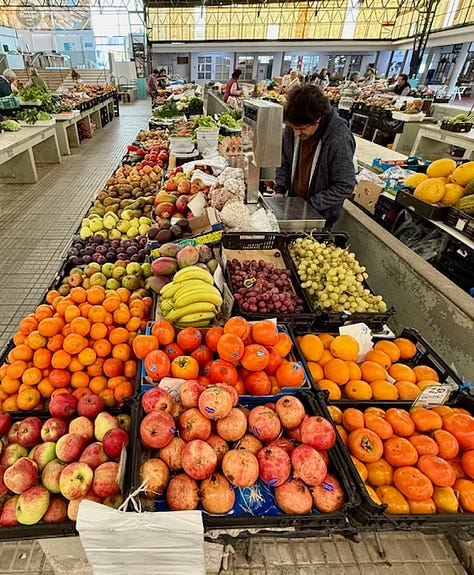

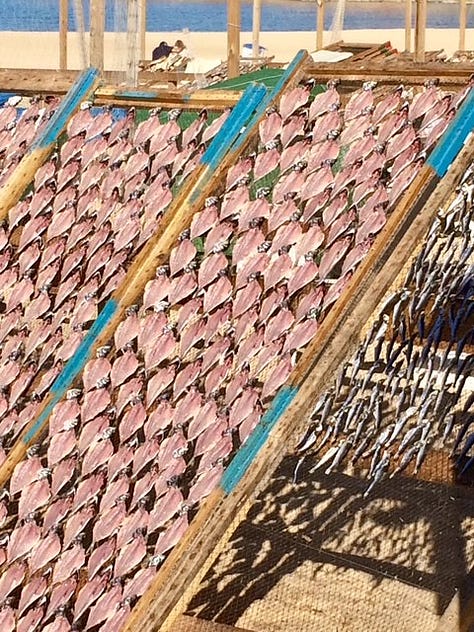
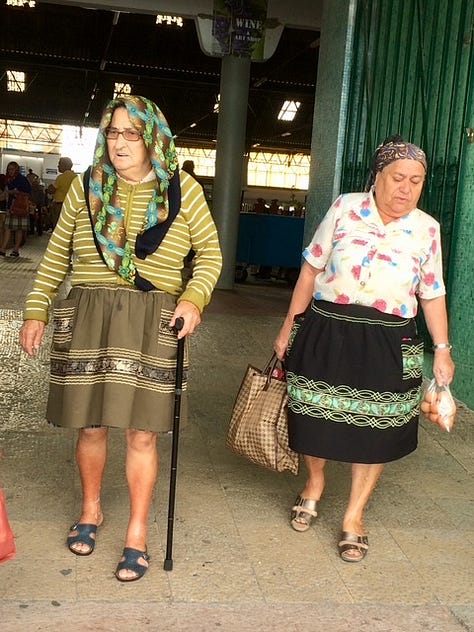
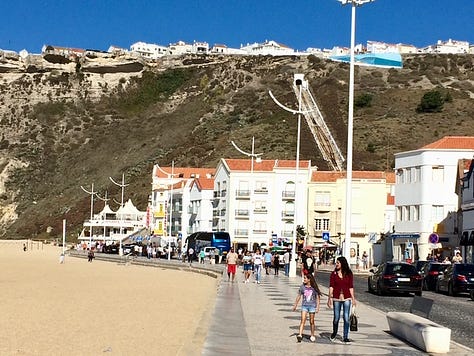
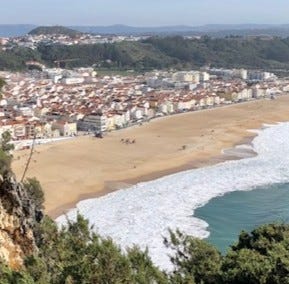
For most of Nazaré’s history, ‘barcos’ (boats) had no safe harbor. Generations of fishermen braved the Atlantic, relying on skill and luck to return safely with their catch. Without a marina, boats were at the mercy of the ocean’s unpredictability and hauling them ashore was a challenge of its own. In the past, fisherman, alongside their wives and children, used oxen to pull the heavy wooden boats and their nets up from the water onto the sand—an effort that reflected both the resilience and tight-knit community of Nazaré’s fishing families. Well into the 20th century, this remained the way of life—until, after years of pushing for change, the long-awaited construction of a proper marina began in 1979. By 1983, the Porto da Nazaré marina was officially opened.
Nowadays, the marina is more than just a port—it’s a lifeline for the local fishermen, offering them a safe place to dock while remaining a working hub. Despite its modern expansion, the marina still holds onto its old-world charm. Early in the morning, fishmongers set up along the docks, selling the day's fresh catch straight from their boats. There’s something deeply reassuring about seeing those traditions continue, even as Nazaré evolves.
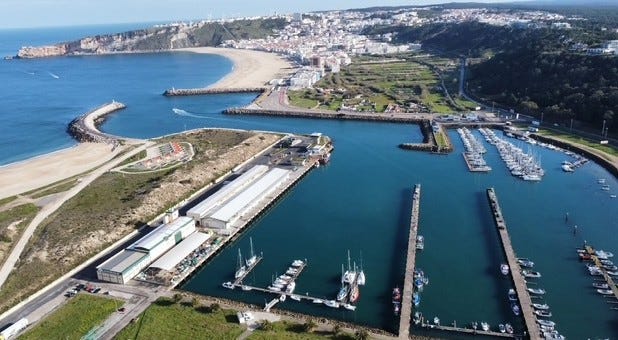

And then, there’s the food. Nazaré is known for its seafood—grilled sardines, fresh fish and steaming bowls of caldeirada (fish stew) with freshly caught delicacies served in cozy taverns. Even though I don’t eat seafood, I still appreciate how each meal reflects the town’s deep connection to the sea. Instead, I often enjoy grilled pork and beef steaks, which are just as flavorful and satisfying. Pairing these dishes with local wine makes every meal something special.
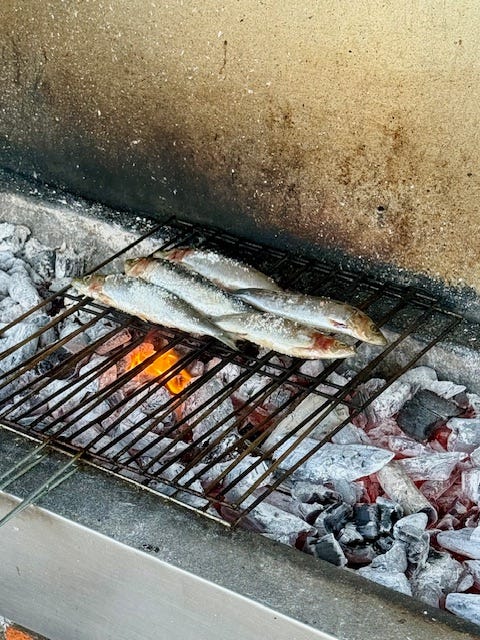
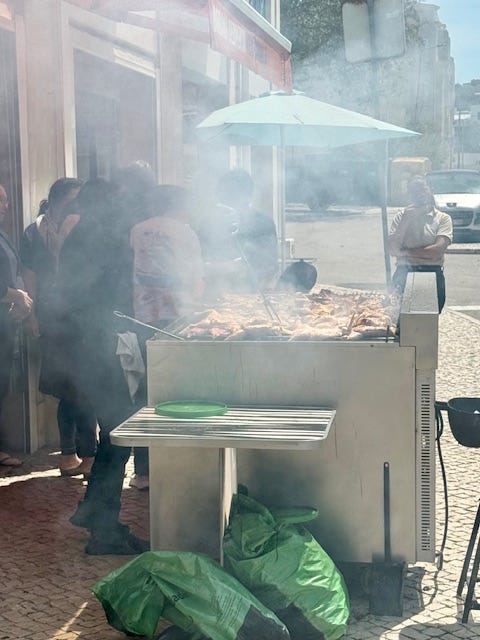
One of Nazaré’s most famous features is its waves. Praia do Norte (North Beach) has become legendary for its record-breaking surf. If you’ve ever seen pictures of surfers riding towering, skyscraper-sized waves, chances are they were taken here. These waves, some reaching up to 86 feet, have placed Nazaré in the Guinness World Records and draws surfers from around the globe. Even if you don’t surf, standing on the cliffs and watching the sheer power of the ocean is mesmerizing.
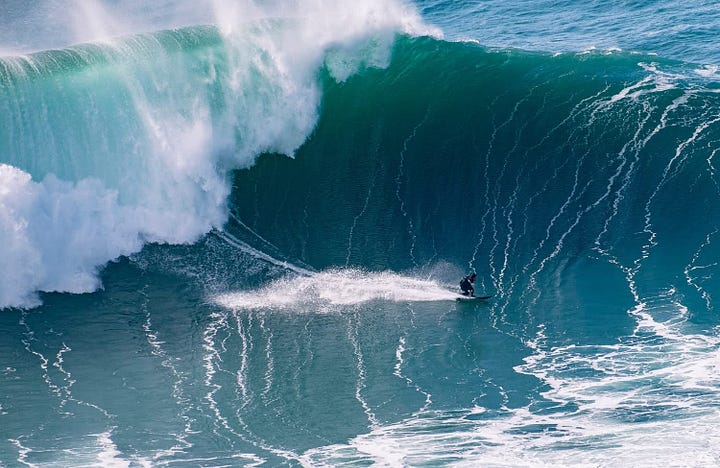
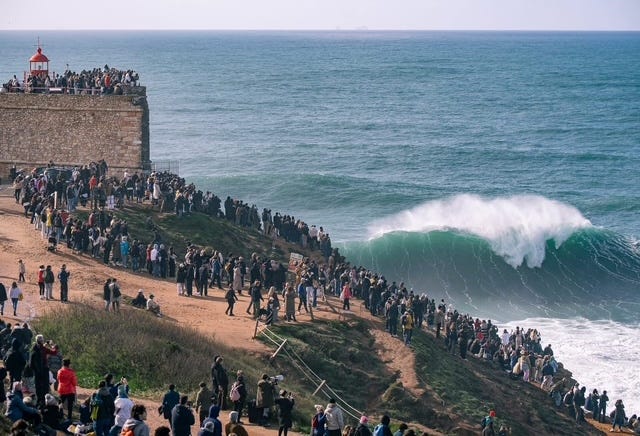
But Nazaré isn’t just about the waves. High above the town sits Sítio, perched on the cliffs that separate the northern and southern beaches. There are three ways to reach it: drive up in a car, ride on the nostalgic funicular, or climb up a cliffside stairway, where a swing halfway up offers a stunning panoramic view. Sítio is a charming place, filled with little shops, outdoor cafés and restaurants. There is a path down to the fort where you’ll get incredible cliffside views of the waves. Along the way, food trucks line the route, perfect for grabbing a bite while you soak it all in.
History lovers will appreciate the Sanctuary of Nossa Senhora da Nazaré, a beautiful ‘igreja’ (church) deeply cherished by locals. The sanctuary dates back to the 14th century and was built to honor an ancient miracle attributed to the Virgin Mary. It’s a significant pilgrimage site, known for its Baroque architecture, twin bell towers, and stunning Dutch tile panels that depict biblical scenes. Stepping inside, there's a quiet warmth in the air, a sense of stories and traditions passed down through generations. Standing there, I can't help but be reminded of the generations of local people who once gathered within these walls.
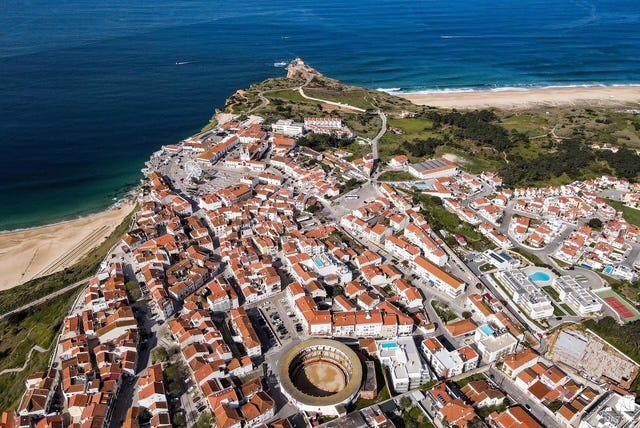
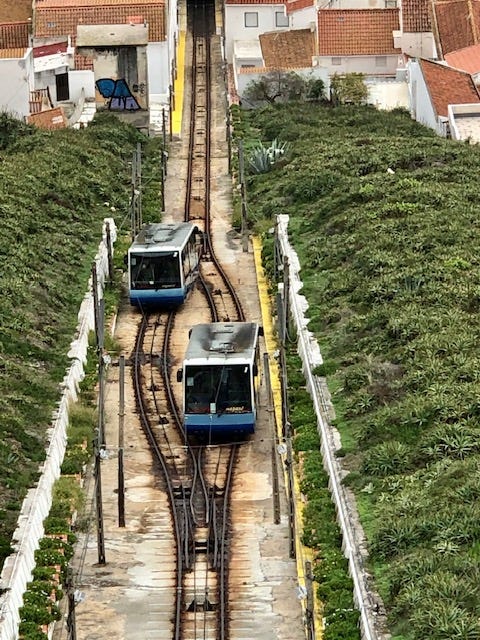
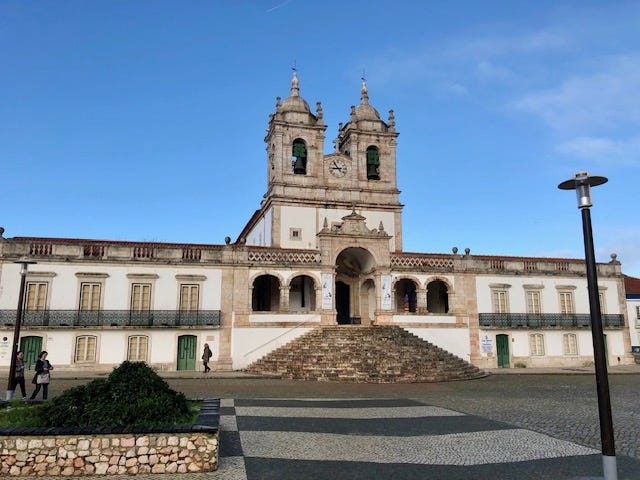
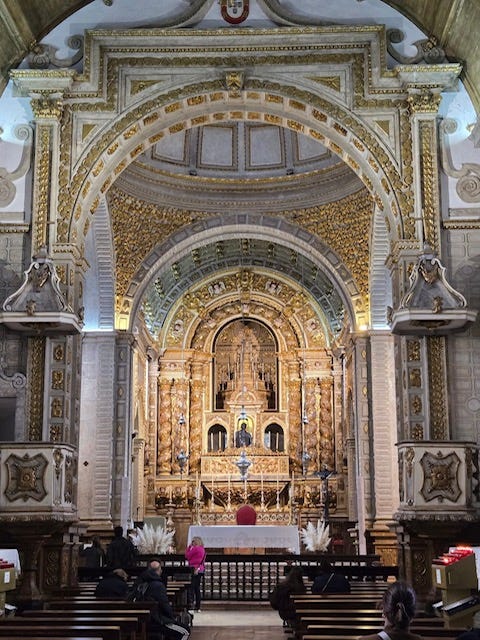
No matter how many times we stand at the edge of the cliffs in Sítio, looking down over our town and out to the endless ocean, the view never loses its spark. Every time, I feel an overwhelming sense of gratitude for this place I get to call home.
Life here isn’t rushed. It’s about appreciating the little things—strolling through cobblestone streets alongside local folk, shopping at the farmers market, feeling the salty breeze from the ocean, and watching the sun set below the horizon. It’s the kind of life that encourages us to slow down, be present, and cherish the beauty surrounding us.
Até á próxima, tchau! (Until next time, bye!)
6
Everything Else In Between:
Adapting to Smaller Living Spaces. With limited storage in most homes, Portugal’s markets accommodate by offering products in smaller quantities. Plastic storage bags, like Ziploc, come in modest packs of 10 or 20—bulk boxes of 50 or 100 aren’t common. The same applies to household staples: toilet paper packs rarely exceed 12 rolls, and paper towels are rarely sold in packages of more than three rolls. Even food packaging follows this trend—milk is only available in small cartons instead of gallon jugs. Bags of snacks and chips in Portugal avoid the excess air common in the U.S. and are filled all the way to the top. Cleaning supplies and toiletries come in smaller bottles compared to the bulk-sized versions in the U.S. Even plastic wrap and aluminum foil are sold in compact boxes rather than oversized rolls. Strangely enough, bottled water breaks this rule—cases of 24 small bottles are easy to find.
Portuguese homes and streets are built for compact living, so cars tend to be smaller, and refrigerators are designed with space-saving in mind. While these differences exist, they are largely influenced by space constraints—Portugal has less shelf space in markets and homes, so bulk buying isn’t as common here as it is in the U.S.
Say It Like a Local:
frutas = fruits
vegetais = vegetables
praia = beach
barco = boat
igreja = church
Stay tuned—we look forward to sharing more of our adventures in Portugal with you! Is there a topic you’d like us to share? Please feel free to comment, ask questions, or share your thoughts and feedback with us.





Great read, thanks for sharing and giving wonderful insight into your new home. It sounds lovely and visiting is certainly in our future. ❤️
Those sardines look so yummy. ..